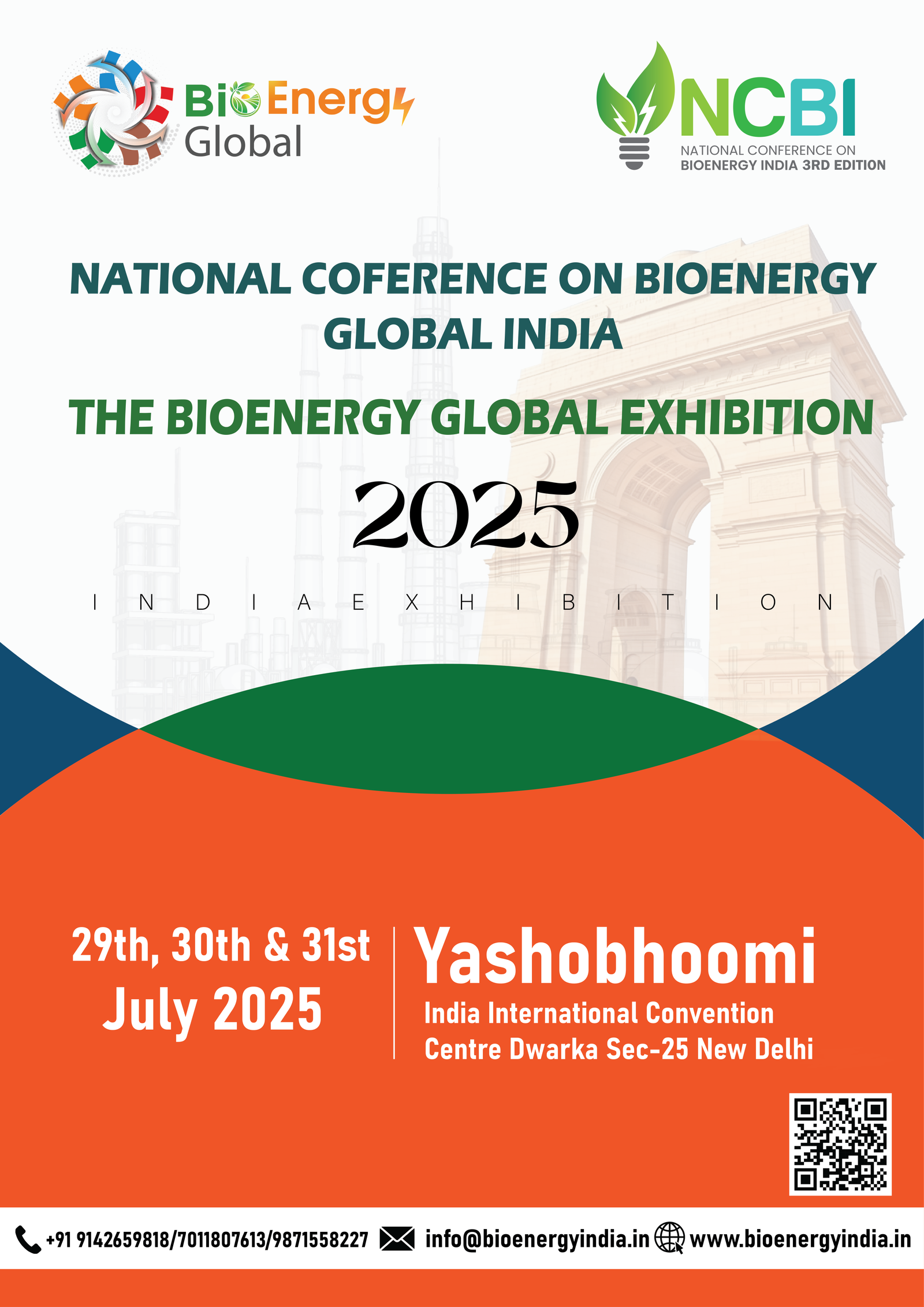Making Our Energy Needs Sustainable
Renewable energy can be defined as those sources of energy which come from naturally replenished resources. Their usage is the need of the hour with paucity of conventional energy sources looming ahead of us. Renewable energy can be used for a variety of uses like electricity generation, transportation, space and water heating and cooling, cooking and irrigation among others.
The examples of conventional sources of energy are coal, oil and natural gas, and bioenergy, solar energy, energy from wind power, marine energy, geothermal energy, hydropower, Hydrogen fuel cells are examples of the renewable sources of energy.
Source of Renewable Energy
Solar energy is the energy produced from sunlight. Its potential to solve the world’s crisis is very high. The amount of sunlight that strikes the earth’s surface in 90 minutes is enough to cater to the world’s energy consumption for a year. The energy generated by harnessing the power of wind is termed as wind energy and irrigation is one of its major areas of application.
Thermal energy generated from the earth’s crust is known as the geothermal energy. It is a combination of energy from the formation of the earth and from radioactive decay.
According to the US government’s Office of Energy Efficiency & Renewable Energy, “Marine energy, also known as marine and hydrokinetic energy or marine renewable energy, is a renewable power source that is harnessed from the natural movement of water, including waves, tides, and river and ocean currents. Marine energy can also be harnessed from temperature differences in water through a process known as ocean thermal energy conversion.”
Renewable energy generated from plant and animal waste is termed as bio energy. According to the US government’s Office of Energy Efficiency & Renewable Energy, bioenergy is a form of renewable energy that is derived from recently living organic materials known as biomass, which can be used to produce transportation fuels, heat, electricity, and products.
Some of the forms of biomass which are frequently used for generating bioenergy include wood, food crops such as corn, forest waste and farm waste. Energy crops, which are crops grown solely with the objective of renewable bioenergy production and not for food source, are also used as biomass.
Benefits and Use
The usage of renewable energy tends to have little or no adverse impact on environment, unlike the use of conventional energy. United Nations observed that fossil fuels, such as coal, oil and gas, were by far the largest contributor to global climate change, accounting for over 75 percent of global greenhouse gas emissions and nearly 90 percent of all carbon dioxide emissions.
United Nations also noted that renewable energy actually was the cheapest power option in most parts of the world today and prices for renewable energy technologies were dropping rapidly. The cost of electricity from solar power fell by 85 percent between 2010 and 2020, pointed out the UN. What is more, over the last three decades, renewable energy systems have become more efficient and affordable.
“Cheap electricity from renewable sources could provide 65 percent of the world’s total electricity supply by 2030. It could decarbonise 90 percent of the power sector by 2050, massively cutting carbon emissions and helping to mitigate climate change,” informed the UN.
According to a report by Mordor Intelligence, the renewable energy’s market size is estimated at 4.23 TW in 2024, and is expected to reach 5.98 TW by 2029, growing at a CAGR of 7.09 percent during the forecast period (2024-2029). However, the report notes that the increasing penetration of natural gas for power generation is expected to hinder the renewable energy market’s growth.
The report also informs that hydropower is the single largest source of renewable electricity globally. In 2022, renewable electricity generation from hydropower accounted for nearly 41 percent of total renewable energy; the largest contribution from hydropower in global renewable-based electricity generation.
According to the International Renewable Energy Agency, in 2022, the global hydropower installed capacity reached 1,393 gigawatts (GW), representing a rise of 2.19 percent as compared to 2021. The report by Mordar Intelligence states that the hydropower’s installed capacity is expected to grow with the upcoming hydro projects and technological advancements.
The renewable resource of biomass can be converted into liquid fuels, which are known as biofuels. Biofuels can enable transportation, including flights too. Ethanol, biodiesel, and renewable hydrocarbon drop-in fuels are some examples of bio fuels. Their application lowers the carbon intensity of vehicles and airplanes.
Application of bioenergy provides several social and environmental benefits besides providing clean fuels. For example, applications of bioenergy can help mitigate air, water, and land pollution and can also generate local employment, business opportunities, and reduce energy import bills.
According to the US government’s Office of Energy Efficiency & Renewable Energy, bioenergy technologies enable the reuse of carbon from biomass and waste streams into reduced-emission fuels for cars, trucks, jets and ships; bioproducts; and renewable power.
In India, there exists tremendous scope for generating bio-CNG (Compressed Biogas-CBG) for meeting various applications such as transportation, industries for captive energy needs, cooking, and generating bio-fertilisers among others.
State Initiatives
The Indian government has been displaying its seriousness in the application of renewable energy sources. From the Ministry of New and Renewable Energy (MNRE) we can know that India has embarked upon an ambitious energy transition journey with a target of fifty percent cumulative electric power installed electricity capacity from non-fossil fuel-based energy resources by 2030 and achieving net zero by 2070.
However, for India to attain its ambitious renewable energy targets and to achieve self-reliance in the energy sector it is imperative that it optimally utilises domestically available renewable energy alternatives.
On August 2022, MNRE announced a scheme that aimed at 100 percent solarisation of Modhera in Gujarat. The town, located in Mehsana district, houses the famous Sun Temple, a temple dedicated to the sun God. Under the scheme, the domestic and agricultural electricity needs of all the households of Modhera were planned to be fulfilled with solar energy, thereby setting up a pilot demonstration project for a village or town running completely on solar power.
The Ministry also has the scheme of ‘Development of Solar Parks and Ultra Mega Solar Power Projects.’ The timeline of the Solar Park Scheme has been extended up to FY2025-26 i.e. 31s March 2026, without any additional financial implication.
On the end of September 2022, the Indian Government allocated a total capacity of 39,600 MW of domestic Solar PV module manufacturing capacity to 11 companies, with a total outlay of Rs. 14,007 crores under the Production Linked Incentive Scheme for High Efficiency Solar PV Modules (Tranche-II). Manufacturing capacity totaling 7400 MW is expected to become operational by October 2024, 16,800 MW capacity by April 2025 and the balance 15,400 MW capacity by April 2026.
MNRE has been promoting the installation of small biogas plants since the year 1981-82 under National Biogas Programme to provide clean gaseous fuel mainly for cooking and lighting purposes in rural areas.
MNRE has also been implementing Biomass Programme to promote Biomass Power and Bagasse Cogeneration in the country, since the 1990s. The Biomass-based Cogeneration Programme (launched in May 2018) was under implementation with the main objective of promoting cogeneration for optimum use of the country’s biomass resources through cogeneration technology in sugar mills and other industries (rice, paper mills, etc.)
Miles to Go
Though our state endeavours in the direction of adoption of renewable energy are praiseworthy but they are not sufficient to ensure a sustainable future for India and our planet.
It is about time for our national and state governments, private players and common citizens to make a concerted and sustained effort to make more and more use of environmentally-friendly renewable energy options. This would help create a healthy and green future for India, where the ogress of pollution is threatening the lives on a massive scale.
World Hydrogen Summit
In the recent past, Secretary, Ministry of New & Renewable Energy, Government of India, Bhupinder Singh Bhalla addressed the World Hydrogen Summit 2024 in Rotterdam, the Netherlands on 15th May 2024, highlighting India’s strategic vision and capabilities in the domain of renewable energy and green hydrogen production.
The Secretary underscored the comprehensive nature of the National Green Hydrogen Mission, comprising components such as pilot projects, research and development (R&D) initiatives, and skill development programs.
Here it deserves a mention that the National Green Hydrogen Mission is a flagship initiative of the Government of India, aimed at fostering the development and adoption of green hydrogen technologies in India. With a target of establishing 5 million tonnes of annual green hydrogen production capacity by 2030, the mission represents a significant step towards realising India’s ambitions in the hydrogen economy.
The Indian Government has made substantial progress in this regard, having awarded tenders for incentives to support green hydrogen production of a total of 412,000 tonnes per annum. Additionally, tenders have been awarded for the establishment of electrolyser manufacturing capacity amounting to 1,500 MW per annum, further bolstering India’s capacity to produce green hydrogen at scale.
The Secretary highlighted India’s integrated grid infrastructure as a key enabler for the seamless integration of renewable energy sources into the national energy mix. He told the Summit audience that this integrated grid not only enhanced grid stability and reliability but also enabled the strategic placement of renewable energy plants, optimising efficiency and minimising the need for long-distance transportation and storage of hydrogen.
The Secretary highlighted India’s ambition to emerge as a leading exporter of green hydrogen. Asserting India’s clear vision and commitment to sustainable energy practices, he underscored the nation’s determination to play a pivotal role in the global hydrogen economy. “With a strategic focus on scaling up production, India aims to capitalise on emerging opportunities in the international market for green hydrogen, thereby reinforcing its position as a key player in the global energy transition,” he asserted.
While highlighting the rapid scale-up of renewable energy infrastructure in the country, the Secretary informed the audience that approximately 43 percent of India’s current installed electricity capacity was from non-fossil-fuel sources, with projections indicating a rise to 50 percent by 2030.




